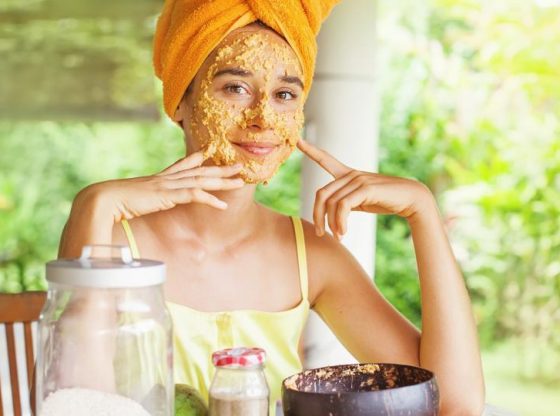
Just because it’s natural doesn’t mean it’s safe for your skin. There are, after all, chemicals in all the ingredients used in home remedies — from besan to baking soda and limestone. Read on to find out how those chemicals could be reacting with your skins acidity levels, healthy bacteria and natural oils
Scrubbing your face with besan (gram flour)

The uttan or besan treatment is virtually an heirloom skincare routine in India. The ground gram does have antibacterial properties, so when applied to the skin, it can exfoliate, cleans the face of dead skin cells, and cause it to look brighter or more glowing.
But, rubbed too vigorously onto the skin, it can cause folliculitis, a skin condition in which hair follicles become inflamed due to a bacterial or fungal infection.
“If you have dry skin or are suffering from an acne break-out, besan is a strict no-no,” says dermatologist Dr Rinky Kapoor. “This kind of application leeches moisture and oil from the skin, drying it out, and this can be risky for anyone. It may even cause your glands to go on the defensive, producing more oil and leading to clogged pores and acne.”
Baking soda to clear the pores

The pH levels in baking soda are very high, indicating that it has high acidic content, and this can cause irritation, rashes and burns. Baking soda when used as a blackhead remover might rip the skin of its protective oil barrier, alter its pH too, and disrupting the growth of natural bacteria on the surface that help to prevent infection.
Chunna (limestone) to quickly clear up acne
Chunna is often used as an overnight solution to clamp down on a cystic pimple and might work if used sparingly. But use it often and you can end up with a rash, red marks, discoloration, and permanent scars long after the zit is gone.
Malai as a face pack
It may suit certain skin types and can cause a near-instant glow, but those with oily skin should stay away. Malai is basically fat and can clog the pores. Try a patch test on different parts of your face before you apply to the whole.
Coconut oil on cuts

This is not so much about what, as when. Apply coconut oil to a raw, red area and you will only aggravate it. When the skin starts to reform on the wound, that’s when coconut oil can help, boosting the re-forming of the skin. In this regard, a lot of our ancient wisdom and knowledge has been only partly retained. “So when people say, it worked for my grandmother, it should work for me, they’re only seeing half the picture,” says dermatologist Dr Saumya Hegde. “It’s also worth remembering that what works for one person may not work for another. Skin treatments are not one-size-fits-all.”
Lemon as a lighteing agent
First of all, your skin is beautiful. Secondly, that kind of citric acid can really upset the natural pH / acidity levels of your skin. It literally eats away at the protective first layer of skin, making it more sensitive to the sun, which can lead to blistering and really patchy pigmentation.
[“source=hindustantimes”]
